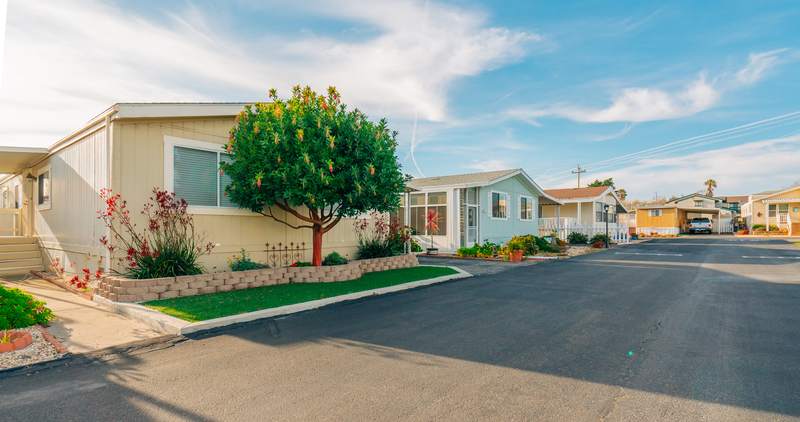Interested in refinancing your home but not sure of your options or the best option for your financial goals? Maybe you’re familiar with the concept of a “no cash-out refinance” and would like more information. If that’s you, it’s worth exploring what a no cash-out refinance is and how it differs from a cash-out refinance – its polar opposite in many ways.
Described in the simplest way possible, a no cash-out refinance is a rate-and-term refinance you can use to replace your current mortgage. But there’s a bit more to it than just this, though.
Let’s take a closer look at how a no cash-out refinance works, its pros and cons, and some common borrower requirements for refinancing.
What Is A No Cash-Out Refinance?
A no cash-out refinance is just as it sounds. It’s a transaction where a homeowner swaps their mortgage for a new mortgage of typically the same amount. Unlike a cash-out refinance, the homeowner won’t convert any of their existing equity into cash that they would basically be able to use as they wish. Instead, a borrower is replacing their mortgage with the goal of lowering their interest rate, getting a new loan term, reducing their monthly payment, or some combination of all three.
You might hear no cash-out refinances also referred to as “rate-and-term refinances.” That’s because this type of refinance loan allows a homeowner to easily change those aspects of their mortgage – the rate and term, that is – but not cash out any of their home equity.
How Does A No Cash-Out Refinance Work?
A no cash-out refinance works like any other type of refinance. First, the homeowner will apply for a refinance loan with a lender. From there, the lender will most often assess the property with an appraisal, and then they’ll ensure the homeowner meets their requirements and create the necessary paperwork.
Once the new mortgage is approved and funded, the homeowner will pay off their existing loan and make monthly payments on their refinanced mortgage until the balance is paid in full.
Pros And Cons Of A No Cash-Out Refinance
Now that you know what a no cash-out refinance is and how it works, we’ll review some of the main advantages and disadvantages of this refinance option.
Pros Of A No Cash-Out Refinance
A no cash-out refinance can come with the following benefits:
- You can reduce your interest rate. If market rates are lower than when you got your first mortgage, you could lower your interest rate with a refinance.
- You can choose a different repayment option. If you want to pay off your mortgage faster or lengthen your loan term, you could use a no cash-out refinance to change your repayment plan.
- You may be able to shrink your monthly payment. If you lengthen your term or lower your interest rate, you could enjoy a smaller monthly mortgage payment.
- You can apply for a different loan type. You can also use a rate-and-term refinance to change the type of mortgage you currently have. For example, maybe you have an adjustable-rate mortgage but want to switch to a fixed-rate loan.
Cons Of A No Cash-Out Refinance
Unfortunately, a no cash-out refinance has these drawbacks:
- You may end up with a higher interest rate. If current mortgage rates have increased, refinancing might give you a higher mortgage rate.
- You could pay more in interest. If you decide to go with a lengthier repayment period, you’ll have to make more payments. As a consequence, you’ll pay more in interest over time.
- You can’t take any cash out. Since you won’t be able to access your equity with this type of refinance, you won’t receive any funds that might come in handy for debt consolidation or funding a home improvement project, for example.
- You must pay closing costs. Just like with your first mortgage, you’ll need to pay closing costs when you get a refinance. You may, however, have the option of paying these costs upfront or rolling them into the loan and paying them over the term of your loan.
See What You Qualify For
Buy A Home
Discover mortgage options that fit your unique financial needs.

Refinance
Refinance your mortgage to have more money for what matters.
Tap Into Equity
Use your home’s equity and unlock cash to achieve your goals.
Who Can Qualify For A No Cash-Out Refinance?
Eligibility requirements vary based on the type of refinance you want to pursue. Qualifications can also vary depending on the lender you choose to work with.
In most cases, though, you’ll need to meet the following requirements to qualify for a no cash-out refinance:
- Minimum credit score: Lenders typically require a minimum score of 620 for a conventional loan, but some government-backed refinance loans accept a score as low as 580 or even lower in some cases.
- Maximum debt-to-income ratio (DTI): A debt-to-income ratio is a measure of your monthly debt payments compared to your gross monthly income. Most lenders require that a borrower’s DTI be 50% or lower, and some lenders require a DTI that’s no higher than 36%.
- Minimum loan-to-value (LTV) ratio: Unlike cash-out refinances, borrowers will typically need a much lower loan-to-value ratio. In other words, you can qualify for a conventional rate-and-term refinanced with as little as 3% equity.
Cash-Out Refinance Vs. No Cash-Out Refinance: Which One Should You Choose?
Cash-out refinances are a popular choice among homeowners who want to convert their equity into readily available cash while changing their mortgage’s rate and term. If you’ve been in your home for a good amount of time and managed to build quite a bit of equity, a cash-out refinance could be a solid choice. But be aware that taking on a larger loan amount will increase your debt burden – which isn’t exactly ideal if you’re trying to cut costs or don’t have extra room in your budget.
If you’re concerned about the additional debt, don’t have a lot of equity in your home or just want to refinance for a lower interest rate or different loan term, a no cash-out refinance may be a better fit for you. This option not only allows you to change your rate and term, but it lets you potentially choose a new loan type and perhaps reduce your monthly payment.
Additional Alternatives
Of course, if you believe that neither a cash-out refinance nor a no cash-out refinance is the right fit, you can also consider some alternatives – which we’ll cover next.
Limited Cash-Out Refinance
It’s worth mentioning that borrowers can choose what’s known as a limited cash-out refinance. Some lenders may offer this form of financing to allow a homeowner to replace their existing home loan with a new mortgage while converting a very small percentage of their equity to cash – as opposed to converting no equity as they would with a no cash-out refinance or converting a large amount of equity with a cash-out refinance.
This option is sometimes called a no-closing-cost refinance because borrowers can use the equity to cover their new mortgage’s closing costs. However, a limited cash-out refinance may result in a higher principal amount, larger monthly payment, or both. This won’t typically happen with a no cash-out refinance.
Home Equity Loan Or HELOC
If you don’t want to replace your current mortgage because you’re satisfied with the interest rate, loan term, monthly payment or all three, you can always choose to convert your equity with a home equity loan or a home equity line of credit (HELOC).
Both options are secured by your home, which serves as collateral for the lender. That means you may be able to secure a competitive interest rate since the lender is taking on less risk. If you fail to make your payments on time, however, you could end up defaulting on the loan and, ultimately, going into foreclosure.
The Bottom Line
Choosing the right type of refinancing for your needs can be tricky, especially if you’re a relatively new homeowner. But if you know you just want to update your rate and term, a no cash-out refinance might be the perfect choice.
View Your Refinancing Options
See recommended refinance options and customize them to fit your budget.

Victoria Araj
Victoria Araj is a Staff Writer for Rocket Companies who has held roles in mortgage banking, public relations and more in her 15-plus years of experience. She has a bachelor’s degree in journalism with an emphasis in political science from Michigan State University, and a master’s degree in public administration from the University of Michigan.












